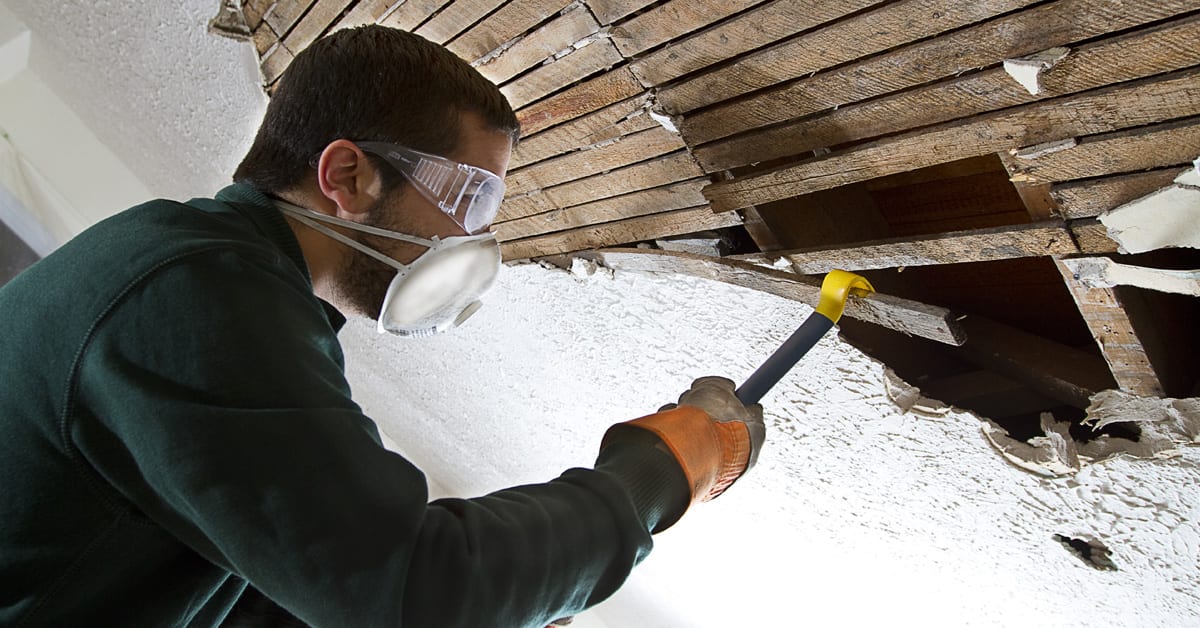During the Industrial Age, various materials and machinery emerged. Asbestos, a silicate mineral, became a superstar during this era because of its many applications in the chemical, construction, power, and automobile industries.
Look at these common products that originally contained asbestos:
- Fireproofing materials.
- Insulation materials.
- Talc in cosmetic powders.
- Car components (e.g. disk brake pads and gaskets).
The Asbestos Dilemma
While the use of asbestos progressed, people weren’t aware of its health threats. Its first victims were industrial workers who were exposed to asbestos fibers—in many cases it caused lung complications and death.
Regardless of health warnings, the asbestos industry became more powerful. Products containing asbestos went into mass production and ended up in households. Even today, asbestos might be hiding in your walls.
Asbestos is now officially prohibited in over 50 countries, including Canada, the United Kingdom, and Australia.
However, in Russia, Asia, and the United States asbestos use is still prominent. The United States Environmental Protection Agency (EPA) initially banned certain asbestos-containing products in 1973. Then, in 1989, they established a complete ban. But it was overturned in 1991 because of major efforts by the Fifth Circuit Court of Appeals. According to the asbestos industry, chrysotile asbestos, which is mostly used today, is less harmful than amphibole asbestos.
While asbestos-manufacturing countries argue that chrysotile is safe, many public health organizations like the World Health Organization (WHO) still oppose its use. The decision to use it or not, thus boils down to individual countries. The United States, Russia, India, Belarus, Zimbabwe, Kyrgyzstan, and Kazakhstan didn’t implement the chrysotile ban.
Are You Still Being Exposed To Asbestos?
They initially used asbestos fibers in residential and commercial developments because of its excellent heat-resistant properties, which are ideal for thermal insulation.
Despite prohibition in several countries, the United States still allows for the import and use of asbestos. They regulate asbestos use on a per-state level.
Annually, around 3,000 Americans are diagnosed with mesothelioma cancer, and the number one cause is exposure to asbestos. Although diagnoses have significantly decreased in recent years, the statistic should still serve as a warning. Apart from mesothelioma cancer, asbestos can cause other conditions such as asbestosis and pleural plaques.
Because of its wide use historically, and depending on the age of your house, you may be at risk of asbestos exposure. But can this exposure cause mesothelioma cancer?
Asbestos In Your Home
To determine if you have asbestos in your home, it’s paramount to know more about your property. For instance, you should know the property’s age and which materials were used during its construction and/or recent improvements.
If you live in the US, the possibility is high that asbestos remains in your house. Some building materials and structures that contain asbestos are:
- Siding or wall cladding.
- Ceiling and floor tiles.
- Cement.
- Textured paint.
- Pipe insulation.
- Drywall.
Homes built after the 1930s, when asbestos use was rampant, most probably have asbestos fibers in the drywalls. Today, many drywall panels containing asbestos are still being sold. If you have insulated cement boards around your home for firewalls, those potentially contain asbestos, too.
Scenarios Involving Asbestos Exposure
If installed properly, asbestos-containing structures won’t warrant much risk for your health, as asbestos fibers are more harmful when inhaled directly.
Presently, many people remain in their houses to prevent COVID-19 infections. This situation gives homeowners the opportunity to consider home improvements. However, these activities may lead to asbestos exposure.
Here are typical scenarios wherein you could suffer exposure:
- Drywall Drilling: Asbestos fibers escape when drilling holes into asbestos-containing drywalls. If you have surrounding fabrics such as curtains or couch covers, the fibers can attach to them and linger, causing long-term exposure.
- Attic Renovation: A prolonged stay at home is the perfect time for an attic makeover. However, attic insulation made of vermiculite can release asbestos fibers into the air when the insulation is disturbed.
- Removal Of Vinyl Floor Tiles: Asbestos was once a popular ingredient for floor tiles. If you’re planning to install new flooring, be careful when removing your old vinyl floor tiles as they possibly have asbestos, which could be released during the removal process.
- Cutting Pipe Insulation: Old plumbing systems used to incorporate asbestos for heat insulation. As they deteriorate over time, you might replace it with more updated insulation. But be careful, because cutting through the pipes can release asbestos fibers.
Ideally, you should hire professionals to help you safely remove asbestos during home improvements.
How Asbestos Exposure Affects Your Health
As victims inhale or swallow microscopic asbestos fibers, the respiratory tract becomes congested, leading to inflammation and irritation. These fibers don’t easily degrade or get expelled out of your system. When they attach to organ linings, specifically the lungs, cells surrounding that area will mutate and become cancerous.
Asbestos exposure can cause the following conditions:
- Pleural effusion.
- Lung tissue thickening.
- Lung cancer.
- Ovarian cancer.
- Laryngeal cancer.
- Mesothelioma or mesothelioma cancer.
Among these diseases, mesothelioma is a dangerous, incurable health condition almost exclusively triggered by asbestos exposure. It damages and inflames the mesothelium—a protective membrane that surrounds your organs.
Long-term exposure to asbestos causes extreme damage to cells and DNA around the mesothelium, resulting in tumor development. Furthermore, different mesothelioma cancer cells can exist in your body, depending on the location.
Takeaways
Although asbestos is an impressive material with a plethora of applications, it can severely compromise your health. Without a basic understanding of asbestos, its applications, and presence inside your own home, you’ll unknowingly be at risk of developing health conditions, such as mesothelioma cancer.








